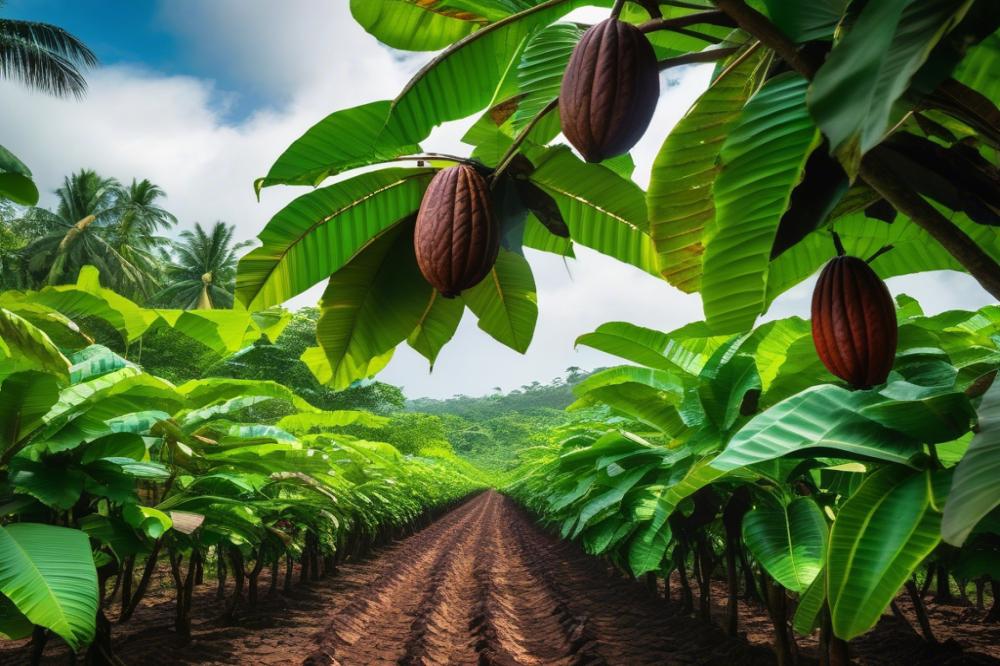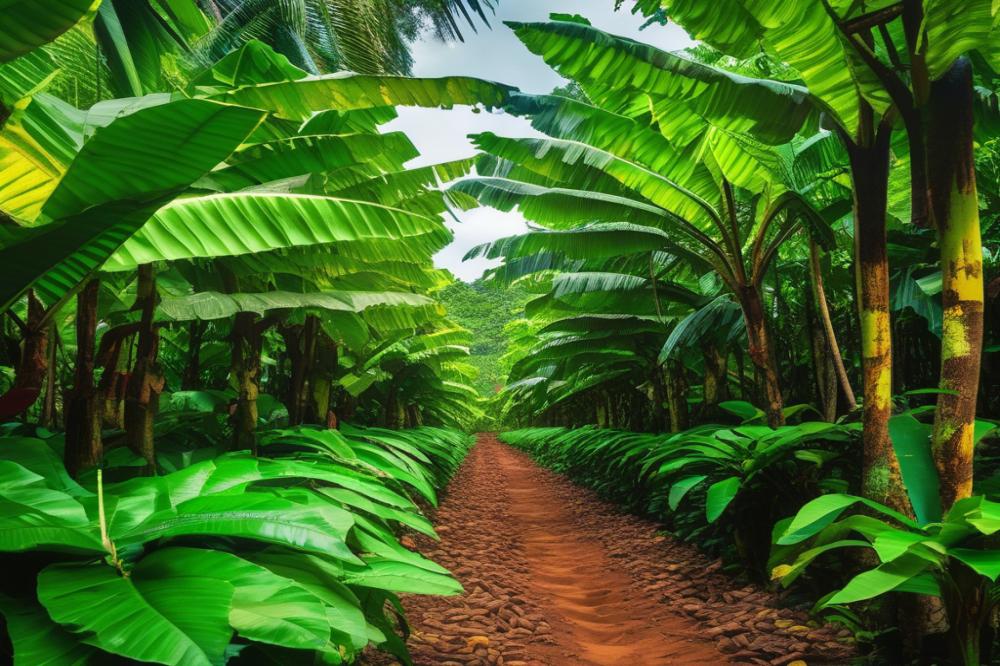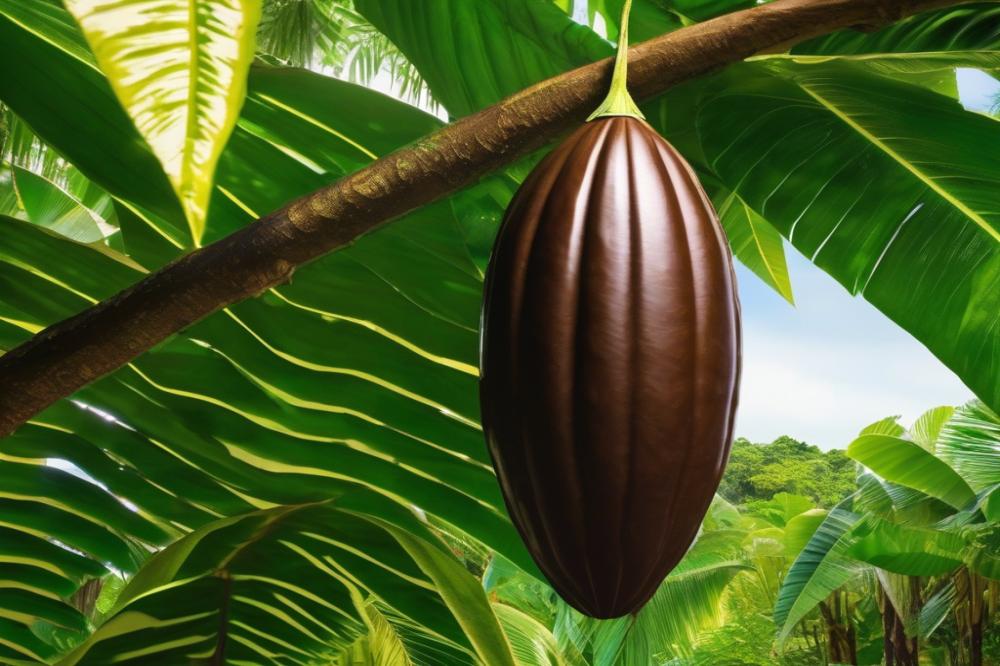Introduction
Cocoa plants are essential to the chocolate industry. They provide the key ingredient for chocolate, a beloved treat enjoyed by millions around the globe. From rich dark chocolate bars to creamy milk chocolate treats, cocoa has become deeply ingrained in various cultures. These plants thrive primarily in tropical regions, where warm temperatures and moisture create ideal growing conditions. However, this delicate balance is increasingly threatened.
climate change poses significant challenges not just to cocoa but to many crops worldwide. A rise in temperature can alter rainfall patterns, impacting the regions where cocoa grows best. Changes in weather can lead to disrupted growing seasons. Farmers face not only shifts in temperature but also increased risks of pest outbreaks and diseases that can devastate crops. The continued deforestation of key habitats further exacerbates the situation by increasing the carbon footprint and lowering biodiversity.
This article will explore how climate change impacts Cocoa plantations directly. We will discuss how sustainable farming practices can help mitigate some of these effects. The focus will be on the implications for cocoa yield, necessary adjustments in agroforestry practices, and the urgent need for climate resilience in farming methods. Understanding this relationship is vital for ensuring that future generations can enjoy chocolate while preserving the environment.
Impact of Climate Change on Cocoa Cultivation
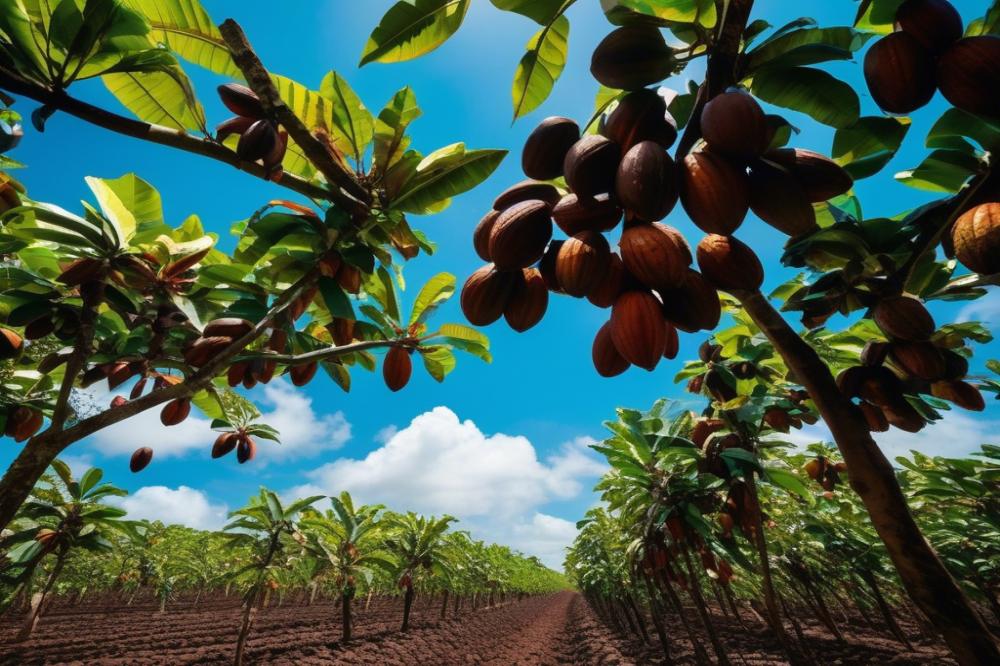
Rising temperatures are becoming a serious concern for cocoa farmers. Cocoa trees thrive in a specific temperature range. A notable increase can lead to lower cocoa yield. Heat stress can cause the trees to produce fewer pods. This affects the entire chocolate industry, relying heavily on consistent harvests.
Altered rainfall patterns play a significant role in growing conditions. Cocoa trees need a balance of rain and dry periods. Too much rain can lead to diseases, while too little can halt growth. Farmers are learning to adapt, but extreme fluctuations make it difficult. These changes also bring about challenges in managing deforestation. As forests are cleared for agriculture, the natural ecosystems that support cocoa also disappear.
Pest outbreaks are increasing due to changing weather. Warm temperatures create ideal conditions for pests to thrive. Cocoa farmers face threats from insects like the cocoa pod borer. This can devastate their crops and profits. sustainable farming practices can help combat these issues. Crop rotation and agroforestry encourage biodiversity, which can reduce pest populations.
Managing the carbon footprint is also crucial in this context. Farmers are starting to embrace practices that enhance climate resilience. Shade trees, which are part of agroforestry, can moderate temperatures. They provide cover and help retain moisture in the soil. This approach not only protects cocoa but also supports the environment as a whole.
In summary, climate change impacts various aspects of cocoa cultivation. From temperature rise to altered rainfall patterns, it challenges farmers every day. They must adapt to protect their livelihoods and ensure the future of chocolate production.
Deforestation and Its Influence on cocoa plantations
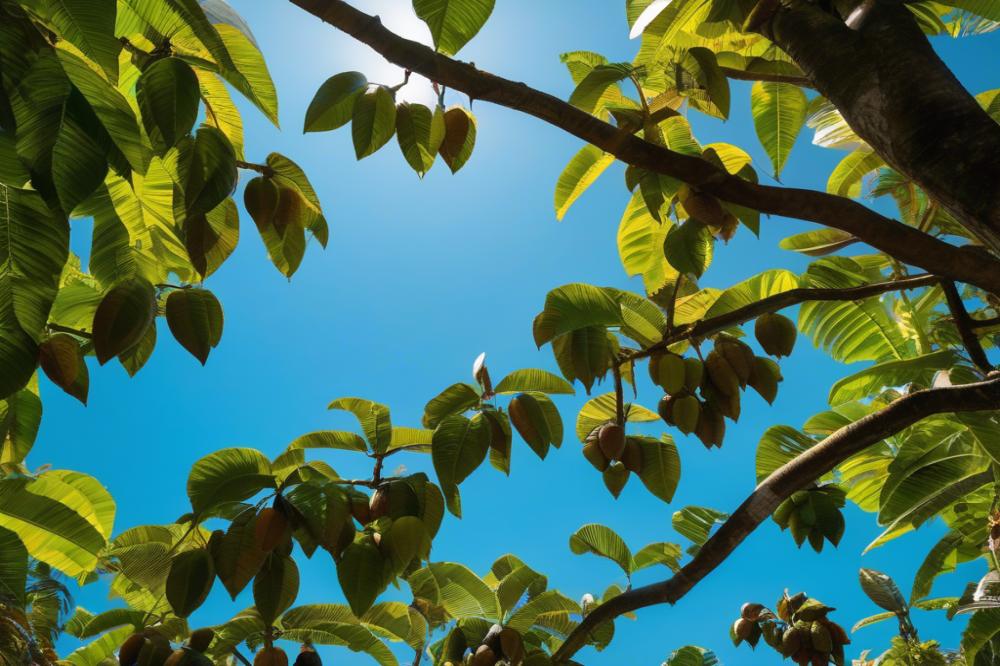
In many tropical countries, cocoa cultivation often leads to deforestation. Farmers clear vast areas of rainforest to make way for cocoa trees, significantly impacting local ecosystems. This loss of trees results in a smaller habitat for wildlife and affects biodiversity. Many animals lose their homes, and unique plant species vanish from the landscape. Healthy forests play a crucial role in regulating rainfall and temperature, factors essential for successful cocoa farming.
As climate conditions shift, rising temperatures and altered rainfall patterns create challenges. Farmers face irregular weather that complicates farming practices. When it rains less or more than expected, cocoa yield suffers. Furthermore, higher temperatures promote the spread of pests and diseases, making it harder to grow healthy cocoa crops. Deforestation not only reduces arable land but also increases carbon footprint, further driving climate instability.
Biodiversity loss has significant effects on soil health. Forest ecosystems help maintain soil fertility through natural processes. Without trees, soil becomes more vulnerable to erosion and degradation. This degradation impacts the nutrients cocoa plants require to thrive. Thus, sustainable farming practices are more crucial than ever. By integrating agroforestry methods, farmers can create a more balanced agricultural approach. This strategy allows for the cultivation of cocoa alongside native trees, fostering a healthier environment.
In addition to losing biodiversity, deforestation also hinders efforts to achieve climate resilience. Cocoa-producing regions, many already vulnerable, face increased risks from environmental changes. Pest outbreaks become more common as natural predators diminish. Shifting agricultural practices to focus on sustainability can help cocoa farmers adapt to these challenges. Supporting the chocolate industry in this transition can benefit everyone involved. A healthy ecosystem contributes to both the land’s vitality and the quality of cocoa produced.
Sustainable Farming Practices in Response to Climate Change
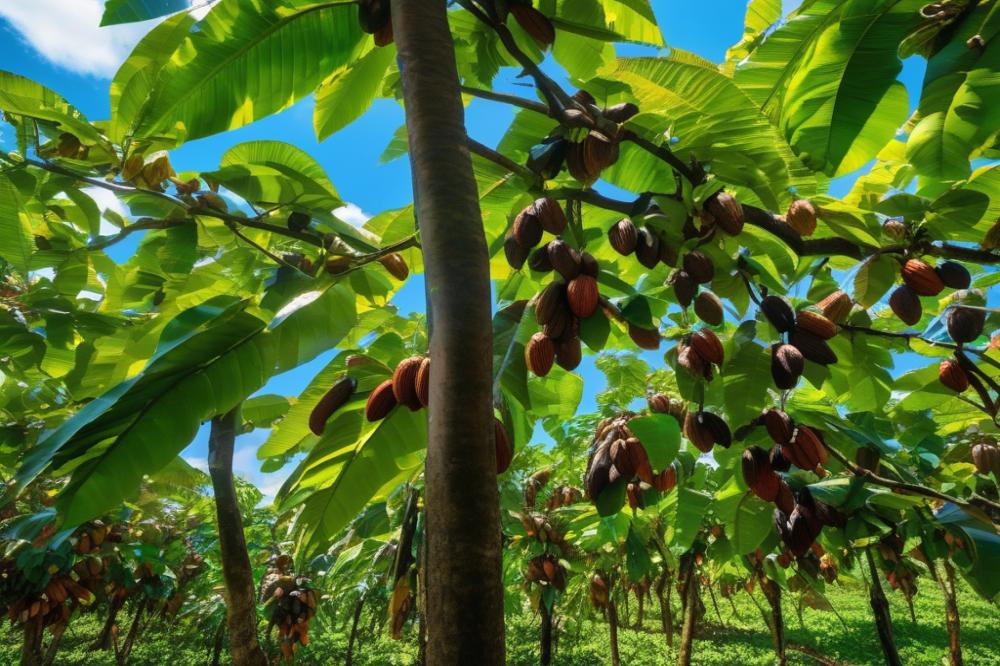
Adaptation strategies for cocoa farmers to cope with climate issues are crucial. As temperatures rise, farmers face challenges like changing rainfall patterns and pest outbreaks. Many are turning to sustainable farming to protect their livelihoods. Techniques such as crop rotation can help maintain healthy soil and boost cocoa yield. Additionally, intercropping with other plants increases biodiversity. This can create a more balanced ecosystem and enhance crop resilience.
The Importance of Sustainable Farming Practices and Agroforestry
Agroforestry is one powerful method gaining traction among cocoa producers. It involves integrating trees and shrubs with cocoa crops. This practice not only minimizes deforestation but also supports wildlife. Healthy tree cover can stabilize local climates and manage soil moisture levels. Furthermore, it assists in protecting cocoa plants from extreme weather. The incorporation of diverse species can combat the effects of pests too, creating a natural pest management system.
Benefits of Reducing Carbon Footprint in Cocoa Production
Reducing carbon footprint in cocoa production holds many advantages. Lower emissions contribute to a sustainable chocolate industry. Practices aimed at minimizing environmental impact help in preserving the planet for future generations. Moreover, by adopting eco-friendly methods, farmers often see long-term benefits. Healthier ecosystems lead to improved cocoa quality and more significant yields. Ultimately, these practices not only tackle immediate challenges but also promote climate resilience for the future.
Building Climate Resilience in Cocoa Plantations
Strategies for Developing Climate-Resilient Cocoa Varieties
Adaptation starts with the development of cocoa plants that can withstand changing environments. Breeders are working on creating unique varieties that are more resistant to temperature rise and shifting rainfall patterns. These plants may also have traits that make them less vulnerable to pest outbreaks. Farmers can then grow these hardier species, leading to increased cocoa yield despite climatic challenges. Advanced agricultural methods, like sustainable farming, are essential. By integrating diverse species in fields, farmers can mimic natural ecosystems, boosting resilience.
The Role of Research and Innovation in Enhancing Cocoa Resilience
Research is crucial in this fight for resilient agricultural practices. Scientists are studying the impact of climate conditions on cocoa plants. This includes understanding how temperature changes affect growth. Innovative technologies can help monitor soil health and moisture levels, providing data to farmers. Tools like these may make it easier for farmers to adapt their practices swiftly. Additionally, exploring agroforestry can play a role. This method not only supports healthy ecosystems but also enhances biodiversity, further fortifying plantations against environmental threats.
Community and Policy Initiatives that Support Adaptation Efforts
Collaboration among local communities is vital for building resilience. Farmers can share experiences and techniques that have worked in their regions. Workshops and training sessions often empower them with knowledge. On the policy side, initiatives aiming to curb deforestation are essential. Governments can implement regulations that protect critical forest areas, creating habitats for wildlife that support healthy ecosystems. Investment in sustainable practices within the chocolate industry can reduce the carbon footprint. These efforts make a significant difference in adapting to environmental changes while ensuring future cocoa production remains viable.
Final Thoughts on Cocoa and Climate Adaptation
Summary of the Impacts on Cocoa Plantations
Cocoa plantations face significant challenges due to rising temperatures and changing weather patterns. These variations in climate can lead to lower cocoa yield. Droughts and excessive rainfall disrupt the growth of cocoa trees, affecting their health and productivity. Additionally, pests and diseases are becoming more prevalent. Farmers must adapt to maintain quality and quantity.
Call to Action for Sustainable Practices
It’s crucial for everyone involved in the chocolate industry to adopt sustainable practices. By embracing methods such as organic farming or agroforestry, producers can create a more resilient system. This approach not only helps the environment but also supports local communities. Stakeholders should invest in research aimed at climate resilience. Education for farmers on adaptive techniques can make a big difference.
Hoping for Resilience in a Changing World
The future of cocoa cultivation will depend on how effectively we respond to these challenges. Collaboration among farmers, scientists, and consumers is essential. It will take collective action to secure the future of cocoa. Only through commitment to sustainable farming practices can we hope to navigate the impacts of climate change. Making thoughtful choices today matters for generations to come.

